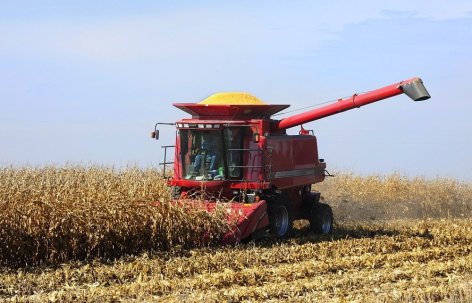AMES, Iowa – Agricultural experts at Iowa State University are available to comment on the 2015 harvest, which is just getting underway across the Midwest. Here’s a look at the trends and storylines they’re following as farmers hit the fields.
Chad Hart, associate professor of economics and ISU Extension and Outreach grain markets specialist
Hart said this year’s lower grain prices are forcing many farmers to scour their budgets in an effort to remain profitable.
“You’re seeing a lot of farmers trying to wring out as much cost as possible right now,” he said. “Where can you cut costs without impacting your yield?”
Hart said farmers may look at ordering cheaper seed varieties and negotiating cash rents as possible avenues to find savings. He urged farmers to get a firm grasp on exactly how much fertilizer and pesticide is necessary to meet goals for yields without applying unnecessary and costly inputs.
While corn and soybean prices soared in 2012 and 2013, flagging international demand in places like China has led to a slump in the market in recent years. At the same time, production has remained strong.
“At its most basic, you’re seeing big supplies combined with lower demand, and that equals lower prices,” Hart said.
Hart said he doesn’t expect a major rebound in prices for at least a couple more years.
Mark Licht, cropping systems agronomist for Iowa State University Extension and Outreach
Licht said he expects a large crop in most sections of Iowa, mirroring the national trend. The U.S. Department of Agriculture has predicted farmers will haul in the third-largest corn crop and the second-largest soybean crop in history.
But Licht also noted that disparities in temperature and rainfall may lead to better yields in some sections of the state than others.
Southern counties, which experienced more variable rainfall this growing season, could see some spotty yields, while northern stretches of the state should be more consistent, he said.
Cooler temperatures than usual for much of the growing season means the crop didn’t suffer heat stress as in years past, Licht said. But cooler weather also creates the potential that some of the crop hasn’t reached maturity yet.
“When maturity lags, we start to have concerns about when the first frost will hit in the fall,” Licht said. “Usually that’s at the end of September or early October. We really like to have the corn crop mature by the first frost.”
Elwynn Taylor, professor of agronomy
Taylor, who studies climate and its effect on agriculture, said the cooler summer minimized the impact of dry conditions in some parts of the state.
“Some areas were really quite dry for stretches of time, but it never got really hot,” he said. “So when the precipitation was light, it didn’t create heat stress.”
Taylor said cooler temperatures cut the demand plants have for water. For instance, temperatures about 10 degrees below average can reduce a plant’s water consumption by half, he said.
Taylor said current predictions look favorable for harvesting over the next few weeks. An El Nino, or a band of warm ocean water that develops in the east-central Pacific, should hold in check hurricane remnants or other huge rainstorms. That’s good news for farmers who depend on dry conditions to get combines into the fields.
Taylor said crops can withstand a frost if the temperature doesn’t dip much below 32 degrees Fahrenheit. But if the temperatures drop to 28 degrees or lower, what Taylor calls a “killing freeze,” crops will likely halt their development.
In an average year in central Iowa, the first hard freeze usually occurs in mid-October. Northern Iowa typically sees a hard freeze several days earlier than southern Iowa, he said.
